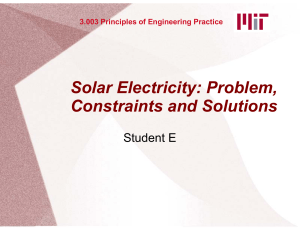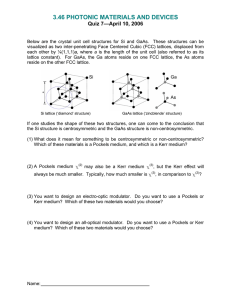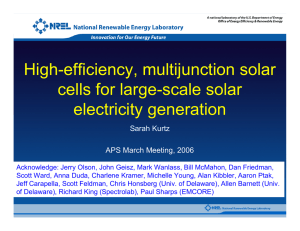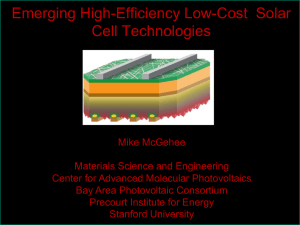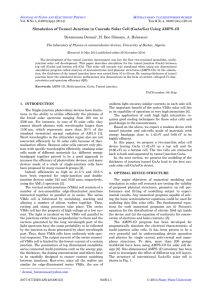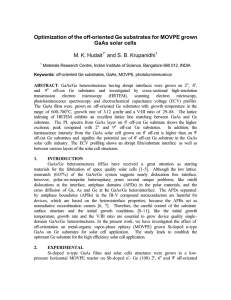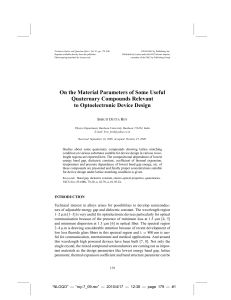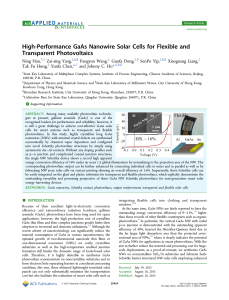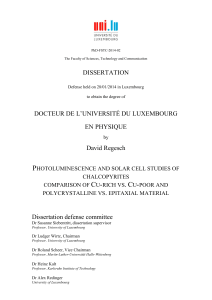For this problem, perform the required simulations using “MIT Atomic... on the nanoHUB. Select the “SIESTA” tool from the menu.... 3.021 Quantum Modeling
advertisement
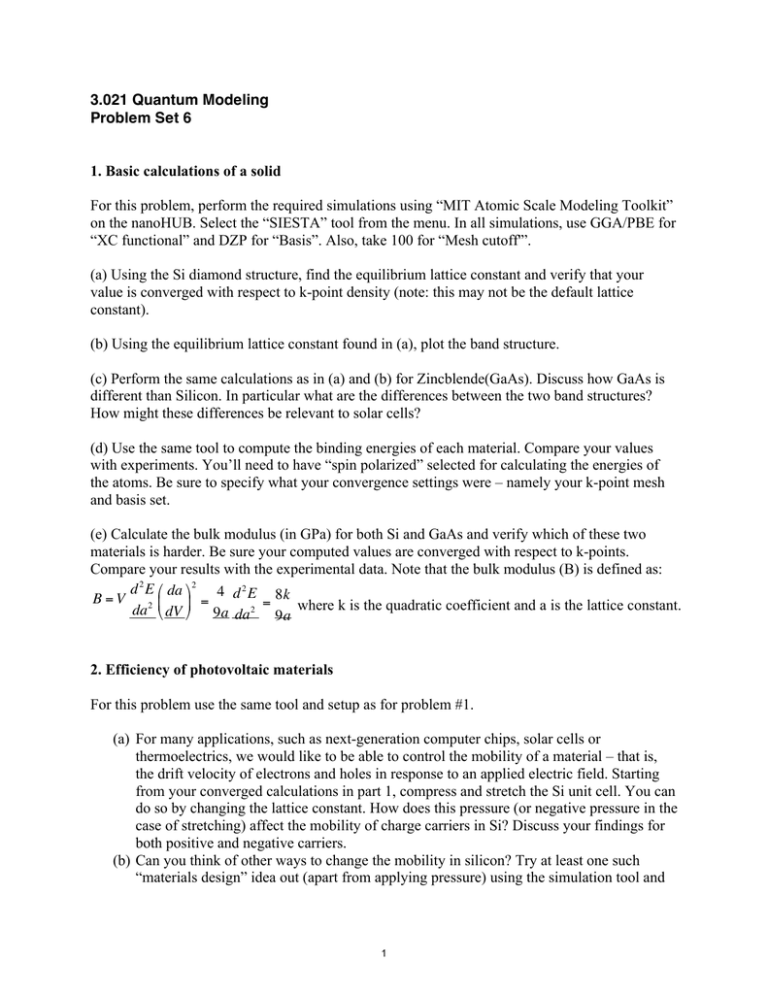
3.021 Quantum Modeling Problem Set 6 1. Basic calculations of a solid For this problem, perform the required simulations using “MIT Atomic Scale Modeling Toolkit” on the nanoHUB. Select the “SIESTA” tool from the menu. In all simulations, use GGA/PBE for “XC functional” and DZP for “Basis”. Also, take 100 for “Mesh cutoff'”. (a) Using the Si diamond structure, find the equilibrium lattice constant and verify that your value is converged with respect to k-point density (note: this may not be the default lattice constant). (b) Using the equilibrium lattice constant found in (a), plot the band structure. (c) Perform the same calculations as in (a) and (b) for Zincblende(GaAs). Discuss how GaAs is different than Silicon. In particular what are the differences between the two band structures? How might these differences be relevant to solar cells? (d) Use the same tool to compute the binding energies of each material. Compare your values with experiments. You’ll need to have “spin polarized” selected for calculating the energies of the atoms. Be sure to specify what your convergence settings were – namely your k-point mesh and basis set. (e) Calculate the bulk modulus (in GPa) for both Si and GaAs and verify which of these two materials is harder. Be sure your computed values are converged with respect to k-points. Compare your results with the experimental data. Note that the bulk modulus (B) is defined as: d 2 E " da % 2 4 d 2 E 8k B = V $ ' = = da 2 # dV & 9a da 2 9a where k is the quadratic coefficient and a is the lattice constant. 2. Efficiency of photovoltaic materials € For this problem use the same tool and setup as for problem #1. (a) For many applications, such as next-generation computer chips, solar cells or thermoelectrics, we would like to be able to control the mobility of a material – that is, the drift velocity of electrons and holes in response to an applied electric field. Starting from your converged calculations in part 1, compress and stretch the Si unit cell. You can do so by changing the lattice constant. How does this pressure (or negative pressure in the case of stretching) affect the mobility of charge carriers in Si? Discuss your findings for both positive and negative carriers. (b) Can you think of other ways to change the mobility in silicon? Try at least one such “materials design” idea out (apart from applying pressure) using the simulation tool and 1 show and discuss your findings. (c) Just as is the case for solar thermal fuels, the band gap of a material is a critical component for both light absorption and energy conversion in photovoltaics. Using the same solar spectrum from problem set #5, calculate the fraction of energy of the solar spectrum that both Si and GaAs could absorb, assuming sufficiently thick layers (hundreds of microns). [Use a scissor shift of 0.5 eV for Si and 0.7 eV for GaAs]. (d) Using what you know about the meaning of the band structure of a material, what is the maximum energy you could extract from a single photon excitation in each material and how would this relate to the voltage a PV cell could produce? Combine this with your work from part (c) to present a calculation of the maximum theoretical efficiency of a solar cell made of each material. 2 MIT OpenCourseWare http://ocw.mit.edu 3.021J / 1.021J / 10.333J / 18.361J / 22.00J Introduction to Modeling and Simulation Spring 2012 For information about citing these materials or our Terms of Use, visit: http://ocw.mit.edu/terms.
